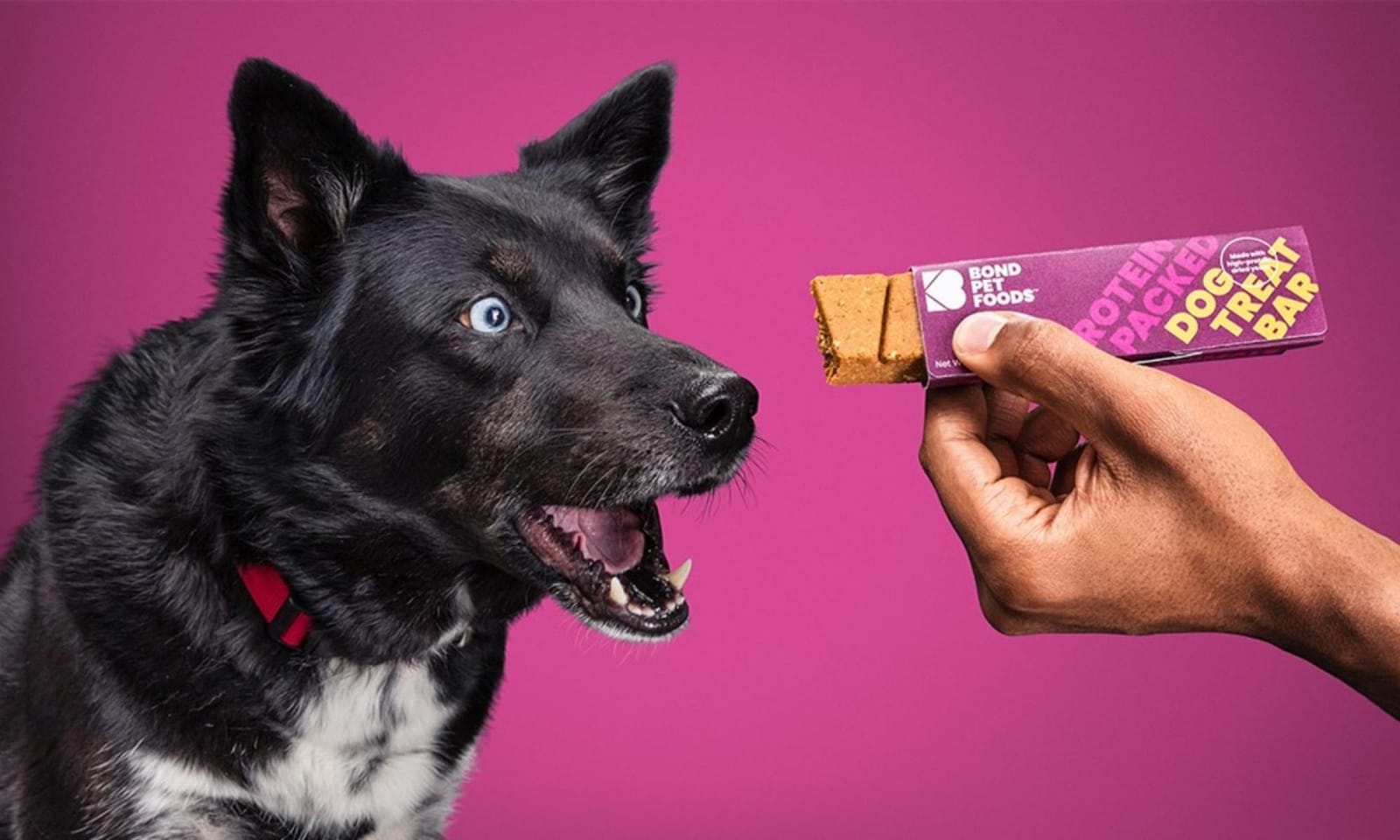Modern problems require modern solutions. The new frontier of solution-based innovation lies in the field of biotechnology. Bioinnovators: The Humans At The Forefront Of Biotech is a series of interviews with the organisations and entrepreneurs at the forefront of changing the world through biotechnology. With each interview, we hope to shine the light on conscious innovators and trailblazers across the globe who are using the natural world, combined with modern technological innovations, to find new solutions to the world’s most pressing problems.
Any pet owner who consumes a plant-based diet can appreciate the moral dilemma that is purchasing meaty pet food products for their furry companion. Reports state that the global pet food industry is responsible for between 25 and 30 percent of the negative environmental impacts resulting from meat production. Bond Pet Foods, an animal-free startup, has engineered a solution—“cultured meat” pet food. Through a fermentation process, Bond claims to be able to replicate traditional pet food products—including their nutritional profiles—without the need for the usual emission-causing methods of meat production. But although this approach may seem ideal and logical, there are still a few layers of resistance to slice through in order to see cultured meat and animal-free pet foods becoming market-leading products. I spoke to Richard Kelleman, the founder and CEO of Bond Pet Foods.
What is the history of Bond Pet Foods, and why is lab-grown meat a central tenet to its mission?
This idea came to be about 10 years ago when my wife and I moved to Colorado for a career opportunity. My background is in advertising, and I spent the last 25 years working on everything from diapers to motorcycles. The account that I was working on in Boulder was Burger King, way before they were serving Impossible Burgers. At the time, they were trying to compete with emerging restaurant chains like Panera Bread and Chipotle, who were redefining what quality fast food looked like. Digging into BK’s business and sourcing challenges, the conversations at work opened my eyes to the downsides that come with meat production and conventional agriculture. Supply chain security, safety, farm animal welfare, sustainability—and more. All of this stuck with me, and ultimately, I became a vegan working on Burger King.
A few years later, my dog Rumples came into my home and life. I knew that meat could be a valuable part of Rumples’ diet, but I struggled with the ethics and sustainability aspects of it. And I began to consider: could there be a better way of giving pets the nutrients they need without harming other animals and the planet?
At the same time, start-ups on the human food side were beginning to make some hay around creating various meat products and by-products through food tech, and I was fascinated by it. I thought: could there be an application of this technology for pet food? The more I learned, the more I realised the path to commercialisation for pet food could be relatively easier because one doesn’t have to fully recapitulate the meat-eating experience for our dogs and cats—the taste, smell, mouthfeel and texture. It’s primarily a nutritional challenge; there’s more flexibility with its form and function.
With that simple realisation, I knew if I could assemble the right brain trust and find a co-pilot who was seasoned in biotechnology, we could create something special. And Bond was born.
Help us understand the science behind the method. How does the production process of lab-grown meat work, and why is it described as similar to “cheese and beer-making”?
Fermentation is a centuries-old process that uses microbes, such as yeast or fungi, to break down a compound, such as sugar, and create a product, like alcohol (beer), gelatin, collagen—or, in our case, protein. Since we’re “brewing” our chicken protein, we call it cultured chicken protein, rather than lab-grown meat. Our precision fermentation process is enhanced to produce more complex molecules for food applications; at a high level, it looks something like this:
- Harmlessly extract skeletal muscle (meat) DNA sample from a heritage hen from a farm in Kansas.
- Couple this genetic code with a strain of food-grade yeast and feed that yeast vegan sugars, vitamins and minerals in a fermentation tank.
- Gently dry and grind the produced chicken protein and blend it into pet products (treats, supplements, primary food).
This approach is most comparable to the production of enzymes (functional proteins) for cheese manufacturing, notably rennet. In the case of rennet, an enzyme that’s necessary to separate the curds and whey in cheesemaking, a piece of tissue from a calf’s stomach is obtained and the genes that represent the building blocks of this protein are isolated. This is then coupled with a species of fungi and follows a similar fermentation process as above. More than 80 percent of rennet in the US is produced by microbial fermentation (including organic cheese too!).
What are the key challenges that Bond Pet Foods has encountered in this process, that it did not anticipate, and how has it overcome them?
We haven’t come across any unexpected challenges in our research and discovery. However, since this is a new application of microbial fermentation, fully developing the meat protein production process does require a considerable amount of trial and error. For example, identifying the right mix of nutrients to feed the fermentation, controlling the pH and oxygen intake, optimising the harvest to include the best protein profile for dog and cat nutrition, etc.
Bond Pet Foods describes its lab-grown pet food innovation as “the kind of breakthrough that will upend the pet industry.” Could you elaborate on how and why this innovation is going to bring about this radical change?
According to a peer-reviewed study in the PLOS One Journal, if America’s dogs and cats were their own country, they’d rank fifth in the world for meat consumption, and up to 30 percent of the negative impacts of meat production can be attributed to the companion animal industry (land, water, energy use, GHG emissions). Our solution will provide the same, if not better, nutritional value for the growing pet population without all the environmental, farm animal welfare and safety downsides.
Concerning the nutritional value of the lab-grown meats, Bond Pet Foods have stated that “Bond’s Cultured Chicken Protein, once fully developed, will have the same primary nutrients of conventional chicken meat including its essential amino acids,” and that their product is “nutritionally comparable to conventional meat but without all the bad stuff.” Could you please elaborate on these statements to help consumers understand why your products will have the required nutritional value for their pets, including how you achieve determination over the final product’s nutritional value in the production process?
The production of Bond’s Cultured Chicken Protein starts by harmlessly extracting the skeletal muscle (meat) DNA from a heritage hen; this sample serves as the nutritional blueprint for our finished product. The final protein characteristics will be identical to the corresponding proteins found in chicken through conventional farming practices and will include all the essential amino acids that dogs and cats need to thrive.
This way, we’re using the most nutritious parts of a chicken to ensure our products have all the essential amino acids that dogs and cats need to thrive. Ultimately our commercial product will undergo a complete third-party analysis for essential amino acids, vitamins, minerals and other key nutrients, and will undergo formal feeding trials with dogs and cats to demonstrate performance and efficacy.
A notable portion of society is dubious about the “unnatural methods” in which lab-grown meat is produced, which is creating resistance to the idea of them or their pets consuming it. This has been widely reported as the so-called “yuck factor,” and has led to some companies rebranding their products as ‘clean meat.’ How can Bond Pet Foods allay such concerns regarding this “unnatural” perception?
The “yuck” factor is due to a lack of education. Industrial agriculture practices are quite “yucky”—most animals we eat today live abnormally short lives at unhealthy weights and, because of the close and cruel living conditions, must be fed significant and routine doses of antibiotics to survive long enough before slaughter. Meanwhile, our Cultured Chicken is produced by a process that has been used for generations to produce many foods and drinks that the average person consumes regularly. To address public concern, we will continue to openly share our process to demystify microbial fermentation and demonstrate how it’s a superior, cleaner, safer way forward.
If the pet food industry made a complete transition to lab-grown meat products, what are the potential benefits to the natural environment as well as societal health?
We will undergo a full Life Cycle Analysis (LCA) on our commercial chicken meat proteins once they’re fully scaled but looking at comparable proteins produced through precision fermentation, we anticipate that we’ll produce 97 percent less GHG emissions. Additionally, our process does not contribute to antibiotic resistance and the potential spread of zoonotic diseases (Swine Flu, Avian Flu, etc.). As our population continues to grow, it’s so important to secure a safe and sustainable way to feed ourselves and our pets.
A common deterrent to lab-grown meat is the ultimate cost per unit. This has been previously attributed to factors such as expensive operating costs due to growth mediums for cells and demand for highly-trained employees with technical skills and expertise in biotechnology. Are Bond Pet Foods’ lab-grown products going to be cost-competitive with traditional pet food products? If so, how has the company achieved this?
At scale, our cultured meat proteins will be comparable in their cost-per-kg to options that are routinely used today, such as chicken breast trim and chicken meal. This is achievable since the feedstock or media for microbial fermentation consists of simple sugars, salts, vitamins and minerals; growth factors and complex media aren’t necessary, and precision fermentation is a well-understood art.







